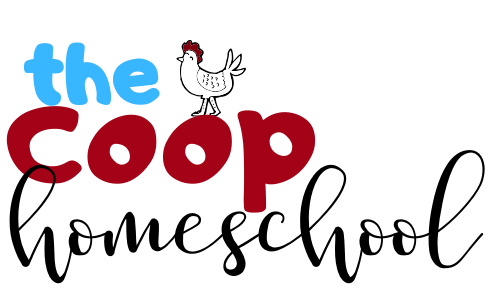Episode 86: Book Review - Raising Critical Thinkers by Julie Bogart
Julie Bogart, author of The Brave Learner and creator of The Brave Writer, came out with a new book this year: Raising Critical Thinkers. We read it and want to share our thoughts on it with you. We also answer the question: What resources or tools can you use to teach logic and critical thinking?
Watch
Listen
Show Notes
*some of our recommendations may include affiliate links, which means when you order them from Amazon, we will receive a small commission.
Scoop on the Coop
Mandi and her kids visited the Sawdust Art Festival, an art festival with handicrafts and traditional (and non-juried) fine arts, with hourly free art classes offered to children and adults. One art class Mandi’s kids enjoyed was a throwing pottery class! This annual tradition is an experiential way Mandi uses to grow her children’s interest, knowledge, and connection to art.
Jessica - Planning Tween Book Club for Coop Group
Topic
We were very excited about Raising Critical Thinkers as we enjoy Julie Bogart with her years of homeschooling experience, and definitely want our children to be critical thinkers. A few mom’s in our co-op also wanted to read it, so we did a little book club together and had a great discussion. Now we want to share our thoughts with you!
Overview
Julie breaks her book into 3 parts:
What is a Critical Thinker?
Read, Experience, Encounter: A Real Education
The Rhetorical Imagination
Each part has several chapters that take the reader through some great concepts, self-reflection, Julie’s personal experience, and then critical thinking activities designed for 3 different age groups.
Who is the Book For?
Raising Critical Thinkers is really for any parent (homeschooling or not) who could use some helpful tools for adding critical thinking to their children’s lives. Julie challenges even the reader to consider the ways we can improve our own critical thinking skills.
What We Loved
The Activities!
By far, our favorite part of this book were the tangible, easy to incorporate and well laid out critical thinking activities. Some of our favorites included:
Says Who? Considering other perspectives - Retelling of the 3 Little Pigs from the wolf’s perspective (The True Story of the 3 Little Pigs by Jon Scieszka). Mandi referenced Wonder, by R.J. Palacio as a helpful story to read aloud with your children to learn the idea of different perspectives.
Itch to Fit Grammar - finding patterns in grammar, swapping out words, changing nursery rhymes using the same rhyming scheme, making sense of nonsense words in Lewis Carrol’s The Jabberwocky
Provocative Questions - ask more, deeper questions like:
Who’s telling this version of the story
Who are the major players
Who isn’t named in this version of the story
Big Takeaways
Self awareness matters - it matters that we know our biases, our values, the community we belong to. Loyalty to this community will impact our thinking.
Thinking well requires depth - research, listen to different perspectives, consider being wrong
Critique
While there are many things to like about this book, I have to say, I didn’t LOVE it. Let me explain…
Julie is quick to point out how we view the world through our narrow lenses and that we need experience, encounters and research to reshape our beliefs. This is absolutely true, but we will still be products of the community and values we hold - even as critical thinkers.
She seemed to prove her own point as she used personal experience and anecdotes to support her claims. On their own, those would be fine as I know that Julie and I have different underlying beliefs, values, political affiliations, etc. I felt like could have more vaguely called ALL people to consider other perspectives without giving away her position. Instead, she many of her own beliefs and values as examples without claiming them as her own. In that way, she seemed like she was communicating one of two things:
That her beliefs and values are the right ones and others should consider
That she doesn’t realize she’s communicating her values without neutrality
I can’t imagine the latter to be true, so I felt a little like she was using woke dialogue and rhetoric without acknowledging it. I don’t mind listening to others with opposing viewpoints, but I do prefer them to own their position when talking to me instead of asking me to reconsider my own point of view while only listening to theirs.
While this is not a particularly small critique, I can be challenged in my thinking without feeling threatened or attacked. I can see where she makes excellent points and suggests great ways to incorporate critical thinking into my homeschooling.
Final Thoughts
Are we willing to research or hear differing opinions on ALL people or events? When you hear a challenging viewpoint, are you willing to be the misinformed party? Or at least willing to consider it?
Coop Q & A
Question: What resources or tools can you use to teach logic and critical thinking?
Answer: Mandi shared a book she is excited to dive into, The Fallacy Detective: Thirty-Eight Lessons on How to Recognize Bad Reasoning, by Nathaniel Bluedorn and by Hans Bluedorn
Jessica bought a logical fallacy poster and cards from TheThinkingShop.org to use and implement.
The Coop Homeschool is a participant in the Amazon Services LLC Associates Program, an affiliate advertising program designed to provide a means for sites to earn advertising fees by advertising and linking to Amazon.com. See Disclosure Page for more information.
